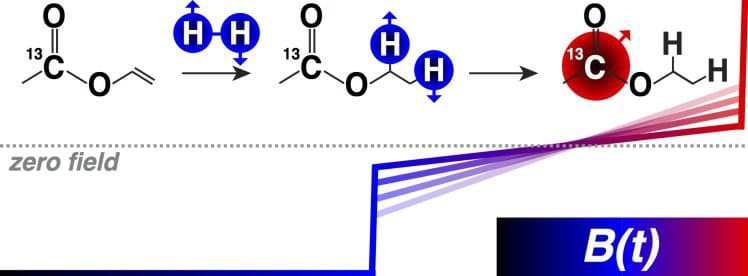132. Pulse-Programmable Magnetic Field Sweeping of Parahydrogen-Induced Polarization by Side Arm Hydrogenation
Baptiste Joalland, Andreas Schmidt, Mohammad S. H. Kabir, Nikita V. Chukanov, Kirill V Kovtunov, Igor V. Koptyug, Jürgen Hennig, Jan-Bernd Hövener, and Eduard Y Chekmenev, Analytical Chemistry, (2019) DOI: 10.1021/acs.analchem.9b04501
Among the hyperpolarization techniques geared toward in vivo magnetic resonance imaging, parahydrogen-induced polarization (PHIP) shows promise due to its low cost and fast speed of contrast agent preparation. The synthesis of 13C-labeled, unsaturated precursors to perform PHIP by side arm hydrogenation has recently opened new possibilities for metabolic imaging owing to the biological compatibility of the reaction products, although the polarization transfer between the parahydrogen-derived protons and the 13C heteronucleus must yet to be better understood, characterized, and eventually optimized. In this realm, a new experimental strategy incorporating pulse-programmable magnetic field cycling has been developed. The approach is evaluated by measuring the 13C polarization of ethyl acetate-1-13C, i.e. the product of pairwise addition of parahydrogen to vinyl acetate-1-13C, resulting from zero-crossing magnetic field sweeps of various durations, amplitudes, and step sizes. The results demonstrate (i) the profound effect these parameters have on the 1H to 13C polarization transfer efficiency and (ii) the high reproducibility of the technique.
